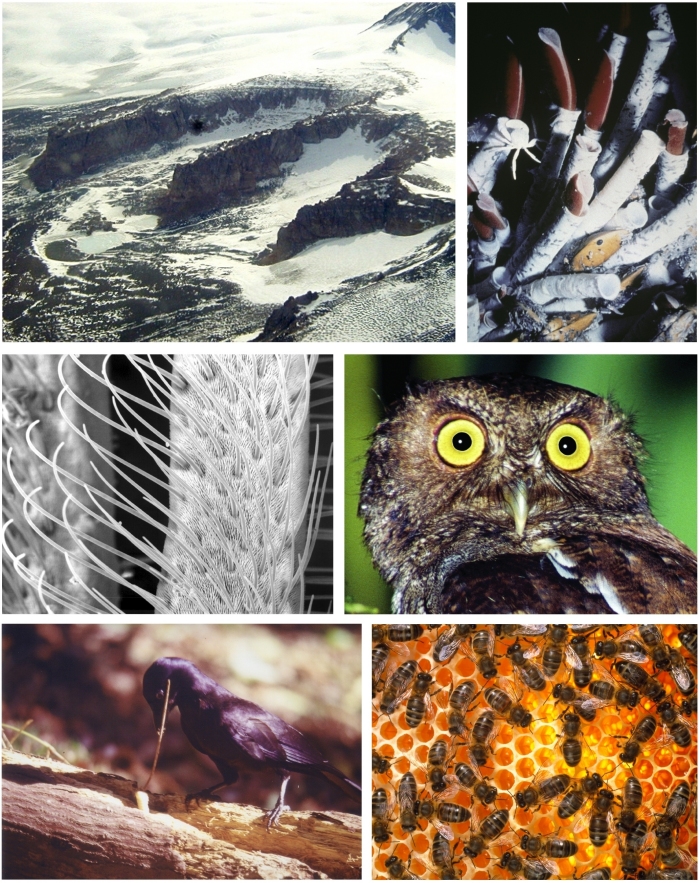

Figure 1. Diversity of adaptation. Top row: Life in extreme environments. Organisms can live in the very cold environment of Antarctica dry valleys (left) or in the deep undersea hydrothermal vents (tubeworm community, right). Middle row: Diversity of morphological adaptation. The fine structure of moth antennae (left) allows the detection of just a few molecules of pheromone. The extra large eyes of the vermiculated screech owl (Otus guatemalae, right) give it an advantage in finding prey at night. Bottom row: Behavioral adaptation. The New Caledonia crow (Corvus moneduloides, left) fashions tools for specific purposes, here to extract insects from holes in a tree branch. Honey bees (Apis mellifera, right) live and work in an organized “society” with specific tasks assigned to maintain the hive. Sources: top left—Laura Connor, University of South Florida ©1999; top right—©Science VU/Visuals Unlimited; middle left—Rippel Electron Microscope Facility, Dartmouth College; middle right—©Bowers Photo; bottom left—Gavin Hunt, Department of Psychology, University of Auckland; bottom right—©Simon Fraser/SPL/Photo Researchers Inc.